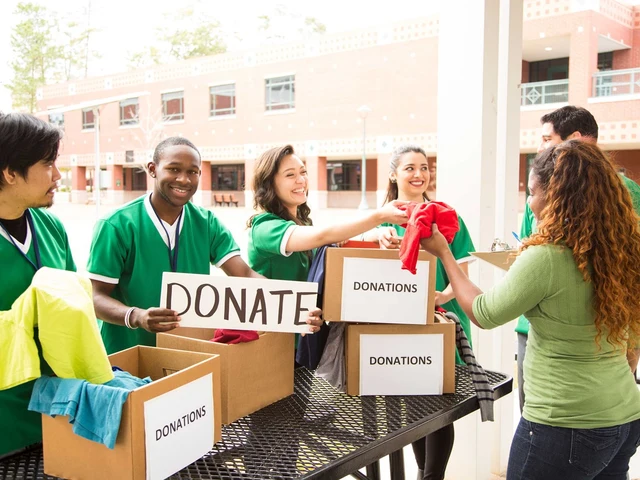
Rome is the kind of place where you can accidentally trip over ancient ruins just walking to grab a coffee. The city mixes world-famous sites with tiny backstreets so well that it’s easy to get overwhelmed. If you want the real Roman experience—and not just hours in touristy lines or eating overcooked pasta—here’s what you need to know right off the bat.
First thing: don’t try to do it all. Pick a few classics like the Colosseum or the Vatican, but leave space for wandering. Early mornings or late afternoons are best if you hate crowds. Grab tickets online whenever you can. Wear comfy shoes—the cobblestones don’t care how cute your Insta feed is.
The city isn’t just about ancient stones, though. Take time for tiny cafes or street food by Campo de’ Fiori. Chat with market vendors. The best parts of Rome often hide away from the main streets, and honestly, half the fun is stumbling into them.
- Must-See Spots Everyone Talks About
- Local Eats and Unexpected Finds
- How to Explore Like a Pro
- Quick Tips for a Smooth Trip
Must-See Spots Everyone Talks About
If you’re looking for the big names, Rome covers all the bases. Start with the Colosseum—it’s the most recognized landmark for a reason. Built almost 2,000 years ago, this is where gladiators fought and crowds of fifty thousand watched. Book tickets online and show up early, around opening time, to skip the masses. If you're a fan of history, the Roman Forum is just next door and honestly, walking where ancient Romans debated and plotted never gets old.
The Vatican City is another heavy hitter. St. Peter’s Basilica and the Vatican Museums pack in both culture and crowds. Buy skip-the-line tickets ahead of time, or better yet, snag an early morning tour. Don’t miss the Sistine Chapel ceiling—Michelangelo painted it in just four years, lying on his back. Dress codes are strict, so cover shoulders and knees.
Tossing a coin into the Trevi Fountain is almost a rite of passage. Local legend says one coin means you’ll return to Rome, two coins mean romance, and three are for marriage. This spot fills up quick, but if you swing by just after sunrise or late at night, you’ll get a moment to yourself.
For that wide piazza vibe, head to Piazza Navona. This place used to be a racetrack back in Roman times, but now it’s packed with street artists and fountains. It’s a good stop if you want to grab coffee or people-watch. Nearby, the Pantheon will catch you off guard by how massive it is inside. It’s free to enter and open every day, but weekends can be a mess—try a weekday morning instead.
If you’re hoping to tick off the biggest Rome travel guide classics while still having time to breathe, pick two or three must-sees in one day, then leave the rest for soaking up side streets or a good pizza. Trust me, your feet and your brain will thank you later.
Local Eats and Unexpected Finds
Rome does food like nowhere else, but most people just hit the touristy spots near big attractions and miss out on what locals actually love. First thing to know: Roman cuisine is simple but packed with flavor. Dishes like carbonara, amatriciana, and cacio e pepe are everywhere, but the best ones aren’t always on the main roads.
Looking for a no-fuss spot? Head to Testaccio. This neighborhood is known for its food markets and classic trattorias, like Felice a Testaccio, where locals go for legit Roman pasta. If you’re up for adventure, try their "coda alla vaccinara"—oxtail stew. Near Trastevere, you’ll find Forno la Renella, a bakery pumping out chewy pizzas and sweet pastries. Grab a slice, wander with it, and see what hidden piazzas you bump into.
Craving street food? Supplì is basically Rome’s answer to arancini—fried rice balls stuffed with gooey mozzarella (try Supplì on Via di San Francesco a Ripa). For lunch on the go, locals love trapizzino, a pocket of pizza bianca filled with classics like chicken cacciatore or eggplant parm. You’ll spot Trapizzino joints all over town.
- Best gelato: Get in line at Gelateria del Teatro and try the rosemary honey lemon flavor. No weird additives here—this is the real deal.
- Top espresso bar: Sant’Eustachio Il Caffè, near the Pantheon. They’ve been doing coffee right since 1938.
- Mercato Centrale (at Termini Station): A food hall packed with stalls for cheese, pizza, craft beer, and even vegan cannoli. Perfect if you’re traveling with picky eaters.
| Dish | Neighborhood | Avg. Price (€) |
|---|---|---|
| Carbonara | Trastevere | 12 |
| Supplì | Testaccio | 2 |
| Gelato | Centro Storico | 3 |
| Trapizzino | Ostiense | 4 |
If you want to feel like a local, avoid restaurants with staff waving menus at you. The real gems—where the best Rome travel guide would send you—don’t chase after customers.

How to Explore Like a Pro
If you want to get around Rome without sweating the small stuff, a little know-how goes a long way. Rome’s metro system is fast and cheap, but honestly it only covers a slice of the city. Most of the big sights sit above ground, so walking is king. You’ll rack up steps fast—locals average over 10,000 a day. Don’t worry, there are plenty of gelato stops to recharge.
For mid-range trips or if you’re tired, buses and trams are your buddies. A single ticket, called a BIT, costs €1.50 and lasts 100 minutes. Pro tip: buy a batch at a tobacco shop (“Tabacchi”) or metro station ahead of time, since you can’t buy one onboard. Just remember to punch your ticket in the yellow machines, or risk a €50 fine—yes, they actually check.
Taxis aren’t as scary as you think, but stick to official white cabs. Rideshare apps like Free Now (used by real Roman cab drivers) are way more dependable than Uber, which has limited cars in Rome. If you want super flexibility, consider renting an electric scooter through apps like Lime or Helbiz, but use bike lanes and stay off heavy-traffic streets. Rome cops love giving out fines for riding scooters on sidewalks.
- want to get from the Colosseum to the Vatican fast? Take Metro Line B to Termini, then switch to Line A; the whole ride takes about 35 minutes.
- if you’re short on time, the Hop-On Hop-Off bus passes all the main landmarks and lets you customize your pace.
- don't expect every site to be flat—some areas, like Trastevere, are hilly, so plan breaks if you need them.
Here’s a quick cheat sheet for getting around:
| Transport Option | Average Cost | Best For |
|---|---|---|
| Metro/Tram/Bus | €1.50/trip | City center, longer distances |
| Taxi | €8-20 average ride | Late nights, airport runs |
| E-Scooter | ~€0.23/minute | Short hops, fun experience |
| Hop-On Hop-Off Bus | €24/day | Tourist sights, minimal walking |
The city is super walkable, but the cobbles can kill your feet if you do too much in one day. Mix bus and foot travel to save energy for the good stuff. No matter what, don’t stress about seeing everything. Pick a focus area—Pantheon, Trastevere, the Forum—and really dig in. If you use this approach, you’ll nail your Rome travel guide game every single time.
Quick Tips for a Smooth Trip
Rome can feel like organized chaos, but a few smart moves will save time, money, and stress while you tick off your Rome travel guide bucket list. These tips will keep your days running smoothly and help you avoid rookie mistakes.
- Buy tickets in advance: For places like the Colosseum, Vatican Museums, and Borghese Gallery, pre-booking really works. You’ll skip the ticket line and maybe even get cheaper deals.
- Use public transport smartly: A single metro or bus ride costs €1.50 and lasts 100 minutes. Buy a daily or 3-day pass at newsstands or metro stations—it’s cheaper if you ride often. Rome’s metro covers main sights, but buses go almost everywhere else.
- Beat the tourist crowds: Aim to visit main attractions early, right when they open, or after 5 p.m. Weekdays are always less packed than weekends. Smaller sights like Baths of Caracalla or Testaccio Market are usually chill even in the middle of the day.
- Mind the dress codes: Churches like St. Peter’s and the Pantheon get strict—no bare shoulders or short shorts. Always carry a light scarf or cover-up, just in case.
- Carry cash but don’t overdo it: Card is OK almost everywhere, but bus tickets, little shops, and some gelaterias are cash-only. ATMs are easy to find, but watch out for high withdrawal fees.
- Stay hydrated: Rome’s tap water is safe, so fill up your bottle at the city’s “nasoni” fountains. In summer, you’ll want water on hand—the city can hit 35°C (95°F) in July.
- Eat where locals do: Restaurants with folks speaking Italian (not holding huge menus outside) are usually better and cheaper. Ask your host or a random Roman for their go-to pizzeria.
- Watch out for pickpockets: Especially crowded spots like Termini station or buses. Keep valuables zipped inside your bag and sling your pack upfront in packed places.
Here's a quick cheat sheet on Rome basics so you don’t get caught off guard:
| Item | Info |
|---|---|
| Time Zone | Central European Time (CET) / UTC+1 |
| Emergency Number | 112 |
| Average Espresso Cost | €1.10 (stand at the bar) |
| Public Toilets | Rare & often cost €1; use cafe restrooms |
| Peak Tourist Season | April–October |
| Free Museum Day | First Sunday each month at state museums |
These tips won’t just make your trip easier—they’ll help you fit right in. When things don’t go according to plan, remember, Rome’s magic is often in those wild, unplanned moments.



